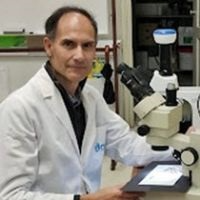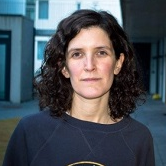Algae as a Nutritional and Bioactive Biomass
A special issue of Applied Sciences (ISSN 2076-3417). This special issue belongs to the section "Applied Biosciences and Bioengineering".
Deadline for manuscript submissions: closed (31 August 2021) | Viewed by 32283
Special Issue Editors
Interests: marine biotechnology; phycology; biodiversity; nutraceuticals
Special Issues, Collections and Topics in MDPI journals
Interests: phycology; microalgae; industrial cultivation; human and animal nutrition
Special Issues, Collections and Topics in MDPI journals
Special Issue Information
Dear Colleagues,
Both marine and freshwater algae have been intensively studied regarding the nutritional content of their biomass and its application in the food industry. Besides, these organisms produce significant amounts of primary and secondary metabolites that present a plentitude of bioactivity, including antimicrobial, antioxidant, anticancer, or antiviral. Genetically modified algae are even being tested for their therapeutic potential against SARS-Cov-2 and other related viruses.
In this Special Issue, the Editors invite submissions focused on algae nutritional and functional properties, in the form of original research or a review.
Prof. Dr. Leonel Pereira
Dr. Joana Silva
Dr. Margarida Costa
Guest Editors
Manuscript Submission Information
Manuscripts should be submitted online at www.mdpi.com by registering and logging in to this website. Once you are registered, click here to go to the submission form. Manuscripts can be submitted until the deadline. All submissions that pass pre-check are peer-reviewed. Accepted papers will be published continuously in the journal (as soon as accepted) and will be listed together on the special issue website. Research articles, review articles as well as short communications are invited. For planned papers, a title and short abstract (about 100 words) can be sent to the Editorial Office for announcement on this website.
Submitted manuscripts should not have been published previously, nor be under consideration for publication elsewhere (except conference proceedings papers). All manuscripts are thoroughly refereed through a single-blind peer-review process. A guide for authors and other relevant information for submission of manuscripts is available on the Instructions for Authors page. Applied Sciences is an international peer-reviewed open access semimonthly journal published by MDPI.
Please visit the Instructions for Authors page before submitting a manuscript. The Article Processing Charge (APC) for publication in this open access journal is 2400 CHF (Swiss Francs). Submitted papers should be well formatted and use good English. Authors may use MDPI's English editing service prior to publication or during author revisions.
Keywords
- microalgae
- macroalgae
- bioactivity
- biomass
- nutrients
- metabolites







